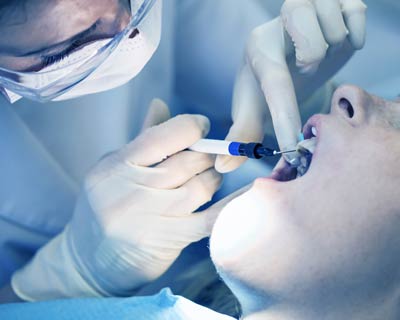Often called a “shiner,” a black eye is as uncomfortable as it looks. A blow to the eye or to the head can cause the skin around the eye to turn purple, blue and black. This happens because skin around the eye is very loose, so fluid fills up underneath, causing swelling and bruising.
A blow to the eye can also break the paper thin bones that surround the eye. This is called an orbital fracture. See an eye doctor if you have symptoms of an orbital fracture, such as double vision, pain when you move your eyes, or if your cheek or teeth feel numb.
A black eye usually heals on its own.
Unless the eye itself has been injured, a black eye will heal on its own in a few weeks. If the eye is injured, however, certain symptoms mean you should see an eye doctor. If there is bleeding inside the eye, or if the injury raises pressure in the eye, a more serious problem is at hand. To be safe, see an eye doctor right away if your black eye is accompanied by any changes in vision, dizziness, loss of consciousness, vomiting or severe pain. Also, you should see an eye doctor if the white of the eye appears red or if the pupil shape or size does not match the normal eye.

Dental work can cause a black eye.
A black eye may show up a couple of days after having your wisdom teeth removed or dental implant surgery. This is because blood and fluid from the surgery can spread beneath facial tissue, including the loose tissue under the eyes. Your dental surgeon will give you directions for caring for eye swelling after surgery.

"Raccoon eyes" can be a sign of a hidden skull fracture.
In some cases, someone can suffer a skull fracture and not know it until they develop two black eyes (“raccoon eyes”) a couple of days later. This occurs when blood from the head trauma leaks into the soft tissue around the eyes. If you have a head injury that doesn’t seem serious, then find both of your eyes turning black a day or two later, seek medical help right away.

Skip the steak!
You may have seen it in movies or on television: someone holding a raw steak on their black eye. There is no scientific basis for treating a black eye this way, and it can actually make you sick. The bacteria on raw meat poses a high risk of infection.

Apply ice. Or frozen veggies.
To help reduce swelling and ease pain from a black eye, hold an ice pack to the eye for 15 to 20 minutes at a time, once every hour if needed. A bag of frozen vegetables (like peas, lima beans or corn) works great as a cold pack, as it can be molded to fit the face. Just be careful to avoid freezing the skin. Wrap the ice pack in a cloth if needed.